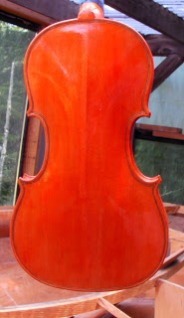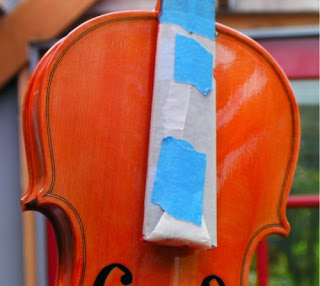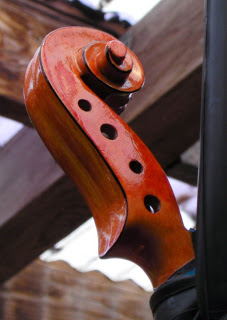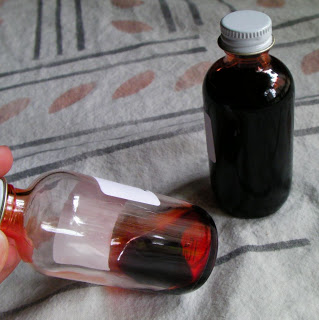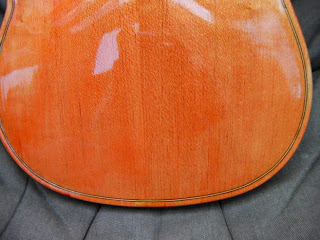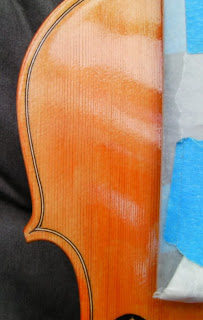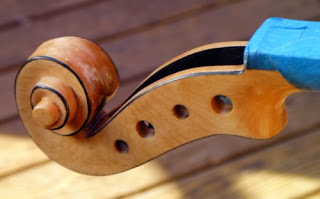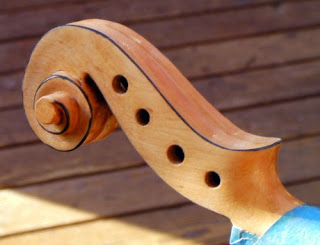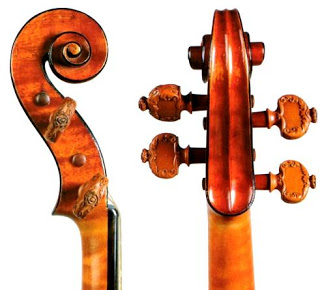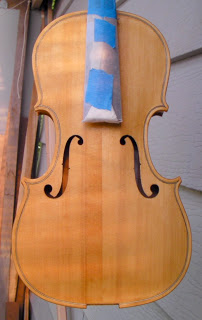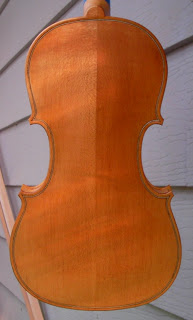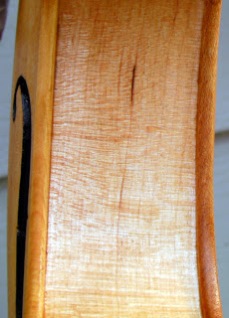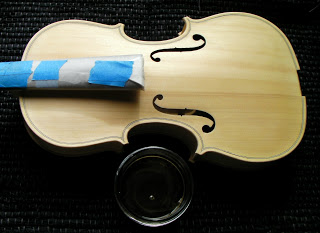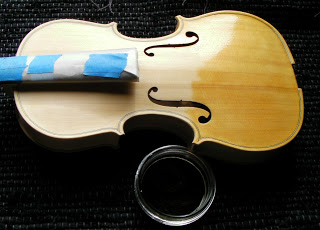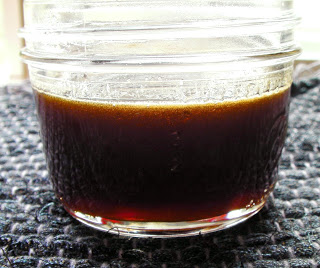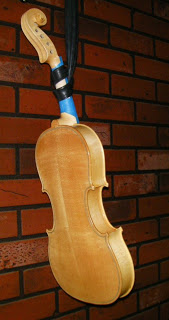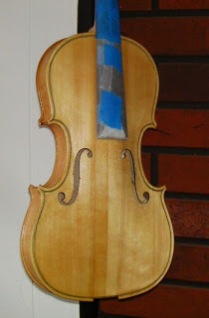Nice shape, eh? I am really happy with the back, even though it has no flames. The grain is really popping!
The front –
Because it’s now so shiny, it’s hard to get good pictures of the whole fiddle. The scroll –
The finish isn’t really as textured as this picture seems to suggest, but it’s not smooth like a sprayed finish either. A few more coats will even out the color (fingers crossed) and it will all come together and as the varnish shrinks over the years, it should look better and better.
I arsed up the third coat of varnish on the belly and had to rub it off. I knew going in that it wasn’t a good day to varnish – I just wasn’t feeling it – but pushed on anyway and paid for it with an added delay. Nothing is un-fixable, but it is frustrating. Sometimes the hardest part of making/-building anything (for me) is knowing when to walk away.
